Culture & Arts Forum - Previous Culture Days
Culture and Arts Forum 2008 Culture Day - 5 November

A unique day of talks, demonstrations, music, art and cinema, all exploring the theme of the Senses
Wednesday 5 November 2008, 1.00pm - 6.00pm
Admission Free!
Come to your Senses - Programme
Baxter Conference Room 1.36, Tower Building, University of Dundee
13.00 Welcome
13.10 Flowers: a feast for the senses - but whose senses?
Neil Paterson (Botanic Gardens)
Sherlock Holmes in The Naval Treaty sees the beauty of a flower as a guarantee of a benign order in nature. Holmes for once is mistaken because the flower is not an object of beauty for our senses but a product of Darwin's struggle for existence, honed by natural selection to appeal to the senses of birds and insects to enlist their aid in pollination.
13.25 Thinking Cinema
John Mullarkey (Philosophy)
Why is film becoming increasingly important to philosophers? Is it because it can be a helpful tool in teaching philosophy, in illustrating it? Or is it because film can also think for itself, because it can create its own philosophy? This presentation will look at the arguments for both positions.
13:40 Seeing Colour in the Gaidhealtachd
Murdo Macdonald (Fine Art)
How does speaking Gaelic relate to the making of art? As a native Gaelic speaker, was William McTaggart more inclined to paint in this or that way? In this talk, Prof Macdonald explores this issue the other way around - if, as an artist, you have truly understood the Highlands, Gaelic may provide the best description of what you have done.
13:55 Break for refreshments
14:20 Architecture as Theatre
Charles McKean (History)
In this presentation, Prof McKean will use 17th-century Glamis as an example to show that architecture as theatre has always set out to manipulate the senses.
14:35 Blind and Silent
Matthew Jarron (Museum Services)
This presentation will compare two of the great American silent comedies, Charlie Chaplin's City Lights and Harry Langdon's The Strong Man, both featuring a blind woman as the main romantic interest, but dealing with the subject in very different ways.
14:50 Sound Pictures
Graeme Stevenson (Music)
How do composers turn images into sound? This presentation will look at the genre of Programme Music and the ways in which images and themes from art and literature have been transformed into music.
15:05 Seeing at a Distance: Camera-Eyes and Tele-Visions in the Scientific Romances of H.G. Wells
Keith Williams (English)
H G Wells' late-Victorian fictions are remarkable for their speculations about the future use of the camera as a 'prosthetic' extension of organic vision. This talk will look at some unusual ways of seeing based on Wells' prediction of technology such as TV, video and virtual reality.
15:20 Design as a Sensorial Technology
Hamid van Koten (Design)
Hamid will discuss some of his work and demonstrate how designers use colour, texture and mass to communicate ideas.
15:35 Break for refreshments

16:00 From Clay To Bronze
Gareth Fisher (Fine Art):
A look at the importance of material sensitivity in the Sculptural process. From plaster and clay models through the complex casting process to the ultimate bronze cast, Prof Fisher explores the sense of materials.
16:15 The Smoking Gun - an explosive history of cellulose nitrate
Vanessa Charles (Book and Paper Conservation Studio)
What do you do when you are responsible for a film archive that could suddenly self-combust? Around the globe, archivists and curators face the alarming problem of looking after reels of film that have the potential to burst into flames and destroy an entire collection. This presentation will take a look at the materials used to manufacture these vintage films and why they are so unstable.
16:30 Sights and Sounds (and Smells) of Old Dundee c.1800-1960
Kenneth Baxter (Archive Services)
Using materials from the University Archives this presentation will demonstrate some of the 'sights and sounds' that were once part of everyday life in Dundee, but which have now disappeared or been consigned to the pages of history.
16:45 This Movie Stinks: Smell-O-Vision and other forgotten film innovations
Brian Hoyle (English)
In the late 1950s Hollywood introduced a number of gimmicks designed to enhance the film-going experience. While some are still used today, others can only be classed as failures (both heroic and frankly absurd). This talk will look at innovations from the latter category that sought to engage senses other than sight and sound, including the infamous Smell-O-Vision!
The programme is expected to finish around 17:00, and will continue in the Lower Foyer Gallery at Duncan of Jordanstone College of Art and Design (Crawford Building):
17:30 Sense of Sight (Exhibitions Department)
Artist and lecturer Iain Sturrock will give a tour around some of the best of the entrance portfolios submitted for the General Foundation Course at Duncan of Jordanstone College. The talk will relate to our sense of sight - describing how the eye sees and how this is reflected in the individualism of the art works on show.
(For those unable to attend the event, the Portfolio Showcase is open to the public until 13 November)

Courtesy of General Foundation Course, Duncan of Jordanstone College of Art and Design
2011 Culture Day - 9 November Place, Space and Time
A free afternoon event featuring a fascinating range of presentations giving scientific, cultural and visual responses to the theme of place, space and time!
Wednesday 9 November 2010, 1.30-5.30pm
Baxter Conference Room 1.36, Tower Building, University of Dundee
Admission Free!
Provisional Programme
1.30
Matthew Jarron (Museum Services)
Welcome
1.40pm
Susan Mains (Geography)
Moving Image, Moving Place: Islands, Identities and Space-Time Emotions
This presentation will explore the ways in which media images of islands - particularly in the Caribbean - offer an important entryway into new understandings of how we represent emotions, space, and time
Alasdair Hood (Botanic Garden)
"A Rich Harvest of Most Beautiful Plants": A World Tour in the Botanic Garden
The University's Botanic Garden turned 40 this year. It was ahead of its time in being laid out on geographical lines. Come on a tour of the world's plants and explore our own British flora.
Brian Kelly (Continuing Education / Dundee Heritage Trust)
A Journey in Space and Time
Find out our real place in the cosmos as we voyage from Dundee to the most distant objects in the known Universe
Philip Braham (Fine Art)
Suicide Notes: From private pilgrimage to public outrage
The artist will discuss his contentious photographic series 'Suicide Notes' that met with moral condemnation in the press, but won the Royal Scottish Academy Morton Award in 2009.
2.40pm Refreshments
3.05pm
Graeme Stevenson (Music)
Space in Music
A look at music that was composed with the position of the audience or the performers as a key feature of the work
Keith Williams (English)
"I have always been given to paradoxes about space and time"
A talk exploring the place of new media in the fiction of HG Wells
Charles McKean (History)
Space and Time - a Revolutionary Theory
Revolutions require the right time, the right circumstances and above all the right place. Do they occur in the countryside? Rarely. For the last 500 years, authorities have been aware of this and designed against it. Yet in 1989 and again today, squares and plazas were crucial to dramatic political change.
Keith Skene (Continuing Education / Biosphere Research Institute)
Of Progress and the Golden Age: finding a place called home
The conservation movement and the Enlightenment had very different visions of where we belonged. We will examine these two schools of thought, exploring the repercussions for us today.
4.05pm Refreshments
4.30pm
Kenneth Baxter (Archive Services)
Time Travel without a TARDIS: Using archives to discover changing places and spaces in Dundee through time
This talk will show how material held by the University's Archive Services can be used to illustrate and understand how Dundee has changed in the past two centuries - its spaces and the people who inhabited them
Neil Paterson (Botanic Garden)
Deep Time and Broad Spaces: Space and Time in Darwin's Theory of Evolution
The strongest evidence for the fact of evolution comes from the distribution of species in space across the globe and Natural Selection demands vast expanses of time to do its work.
Brian Hoyle (English)
Cinema, Time and Space
Through an examination of works by a range of directors this talk will examine cinema's unique ability to manipulate time and space. By combining cinematic techniques with the viewer's imagination, filmmakers are able to extend, compress and elide time; eradicate the distance between locations; and present vastly different spaces to the viewer
Phil Vaughan (Graphic Design)
Comics: 3D space to 2D time
Exploring the technique of using 3D software to digitally create 2D comic art...
5.30 end
2010 Culture Day - 10 November Diversity!
A free afternoon event featuring a diverse range of presentations on the theme of diversity
Wednesday 10 November 2010, 2.00-5.45pm
Baxter Conference Room 1.36, Tower Building, University of Dundee
Admission Free!
Programme
2.00 Welcome
2.15 Rachel Jones (Philosophy)
Identity and Diversity - Race, Gender and Philosophy
This talk will examine the ways in which attention to race and gender has changed the ways we read key philosophers of the past, and will also show how debates about gender and race are changing the ways we do philosophy in the present
2.30 Murdo Macdonald (Fine Art)
The Diversity of Responses to the Gaidhealtachd in Visual Art
This presentation explores the variety of responses to Gaelic culture by artists, with a particular emphasis on recent work explored in the AHRC funded project Window to the West
2.45 Cathy Caudwell (D'Arcy Thompson Zoology Museum)
Biodiversity and Museums
Museums have become the repositories of extinct creatures - Dodo, Tasmanian Wolf, Passenger Pigeon and many others. What can museums tell us about biodiversity? Are the collections simply a reminder that the world is a less diverse place than it used to be?
3.00 Keith Skene (Continuing Education)
In Search of the Driver of Diversity
There are millions of species of all shapes and sizes on our planet. What has led to this diversity? Answers may be found in the darkest hours of Earth's history, the Mass Extinctions.
3.15 Refreshments
3.30 Charles McKean (History)
Why unity and diversity need each other: the experience of Edinburgh
Enlightenment philosophers warmed to the idea of a unity which permitted diversity. Since the New Town of Edinburgh was the largest built example of Enlightenment thinking, that concept should have been evident upon the streets. Was it?
3.45 Neil Paterson (Botanic Garden)
Design and Diversity in Nature: William Paley, Charles Darwin and the Blind Watchmaker
Charles Darwin was much impressed as a young man by William Paley's "Natural Theology", with its many examples of apparent design in nature. In a great irony of history, Darwin's theory of evolution by natural selection was destined to subvert Paley's argument by providing design without a designer.
4.00 Vanessa Charles (Book & Paper Conservation Studio)
The Paper Trail: from Diamond Sutra to Damien Hirst
We take paper for granted; it sits in our pockets, covers our walls and piles on our desks. Sometimes precious, yet often intended to be ephemeral, this diverse material has a long history. The talk will explore our relationship with paper and show what measures conservators take to preserve it.
4.15 Graeme Stevenson (Music)
Live to Compose, Compose to Live
JS Bach was arguably the greatest composer of the Baroque, but this presentation will explore the diverse music produced by his sons at the start of the Classical period.
4.30 Refreshments
4.45 Chris Murray (English)
Is it a bird? Is it a Plane? No, it's a talk about Formal Diversity in Comics!
This talk will discuss how comics appropriate lots of different styles, forms and techniques from other media, and look at how diverse comic traditions (Japanese, French, etc) have informed the visual and narrative style of Anglo-American comics, and vice versa.
5.00 Caroline Brown (Archive Services)
Being different: "insanity" in the 19th century
The University of Dundee Archive Services holds the archives of Sunnyside and Liff Asylums. Who were the people who were admitted to the asylums, why were they considered insane, how were they treated and what happened to them?
5.15 Brian Hoyle (English)
Who Know Where They're Going? Diversity in the films of Powell and Pressburger
Michael Powell and Emeric Pressburger were responsible for some of the finest films ever made in Britain, but they were slow to gain this recognition, partly because of their commitment to diversity in all things. They rarely covered the same ground twice and gathered around them a diverse technical crew to achieve their dream of "total cinema".
5.30 Rob Duck (Geography)
Geodiversity of Scotland: a personal perspective
Diversity in nature is usually taken to mean the diversity of living nature. Geodiversity, however, recognises the parallel importance of the range of abiotic nature and in this regard Scotland has no equal, as this personal perspective explores.
5.45 End
2009 Culture Day - 4 November Origins

A free afternoon event featuring talks, film, music and drama, on the theme of Origins
Wednesday 4 November 2009, 1.30pm - 5.30pm
Admission Free!
Programme
Baxter Conference Room 1.36, Tower Building, University of Dundee
1.30 Dundee's Links to Darwin
Matthew Jarron (Museum Services)
Two of the University's early professors, D'Arcy Thompson and Patrick Geddes, knew and corresponded with Charles Darwin. This presentation explores these connections and looks at how Thompson's theories of mathematical biology were seen as an alternative to Darwinian evolution.
1.45 Shadows on the Cave Wall: a new theory of evolution
Keith Skene (Life Sciences / Continuing Education)
Keith's radical book presents a completely new theory about how life evolved and how our planet functions. Demonstrated by a giant inflatable snow globe, he will examine the evidence supporting his theory. Keith will also be available at the interval to sign copies of his book.
2.00 The Origins of Heritage: Changing Views of the Past
Neil Grieve (Town &Regional Planning)
Looking at the development of our concept of heritage and the development of building conservation as we know it today.
2.15 Evolution in the Making
Alasdair Hood (Botanic Garden)
Exploring the development of the Garden of Evolution at the University's Botanic Garden and the evolutionary story it tells.
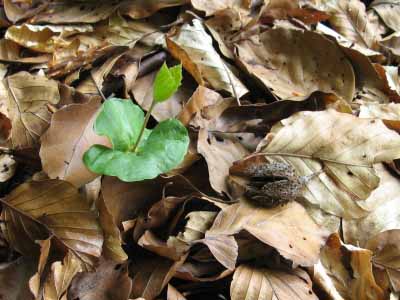
2.30 Refreshments
2.50 Artist's Talk
Janey Muir (Fine Art)
Master of Fine Art student Janey Muir will talk about the limited edition lithographic print she has created for this event - part of a series of works in which the artist considers the animal characteristics of herself and her family.
3.05 Origin and Origination: A Sceptical View
Prof Nicholas Davey (Philosophy)
A brief reflection on the meaning of the concepts origin and origination, the difficulties of applying the term origin, and why in the Humanities the concept of origination is always forward-looking.
3.20 One Art College, Many Origins! The Origins and Evolution of Duncan of Jordanstone College of Art &Design
Kenneth Baxter (Archive Services)
Using archival sources, this talk looks at the complicated origins and development of the Art College from its beginnings in the late 19th century to its official emergence as an independent college in 1975.
3.35 The Origins of the RSNO
Graeme Stevenson (Music)
Follow the rise from amateur music making in the 18th century in Edinburgh to the blossoming of Scotland's professional orchestras in the 20th century
3.50 Refreshments
4.10 Rejecting Origins: Scotland's Architecture 1760-1820
Charles McKean (History)
This talk will look at how Scottish architects rejected their ancestry and aimed to create a new Scottish civil society from Greek and Roman models.
4.25 Under the Covers and Between the Sheets: Secrets within Books
Emma Fraser (Book &Paper Conservation Studio)
Find out how the conservation of books provides us with historical evidence that goes beyond the text.
4.40 "Thank Darwin I'm Am Atheist": Darwin, Evolution and Natural Selection in the Films of Peter Greenaway
Brian Hoyle (English)
Peter Greenaway's aesthetically and intellectually challenging films often present a world in which logic has replaced feelings, fact has replaced faith and Darwin has replaced God. This talk will examine the role that Darwin and his theories have played in Greenaway's films.
4.55 The Creation pageant
JOOT Theatre Company
A dramatized reading of a mediaeval Mystery play from the Towneley cycle about the Creation and Fall of Man.
5.30 End
Special Free Gift!
As their contribution to this year's Culture Day, the Exhibitions Department have commissioned artist Janey Muir to create a special limited edition lithographic print, which will be given free to the first fifty people to attend the event.
2007 Culture Day - Something in the Air

Inertia by Duncan Marquiss, 2001
(University of Dundee Museum Services, copyright the artist)
A unique day of talks, demonstrations, exhibitions and films, all exploring the themes of air, climate and weather
Wednesday 14 November 2007
From 11.30am - 6.00pm across four venues: Botanic Garden, Carnelley Lecture Theatre, Cooper Gallery and Tower Foyer gallery
Programme
University of Dundee Botanic Garden, Riverside Drive 11.30am-12.30pm
11.30am From Rainforests to Deserts - how plants cope with climate (and each other)
Start the day by spending an hour exploring the Botanic Garden's glasshouses. Neil Paterson will show us the tropical rainforest and desert biomes and explain how plant life is adapted to these very different habitats.
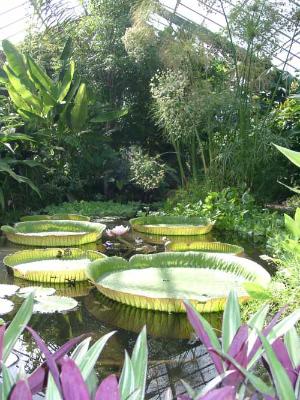
Main Lecture Theatre, Carnelley Building, 1.00-5.00pm
1.00pm Thunder and Lightning without the Rain
A dramatic indoor demonstration by Neil Taylor (Education)
1.15pm 'Whilst you do climate here!' - Thomas Carnelley and the Public Health
Michael Bolik (Archive Services)
How Thomas Carnelley, first chemistry professor at the University, undertook research into the quality of air in homes and schools in Dundee - an inspirational example of town and gown interaction led by a desire to tackle the city's poverty in the 1880s.
1.30pm Dare to Breathe
Lily Forrester (Philosophy)
This talk will look at the work of French philosopher Luce Irigaray, who, in order to set up a new way of existing in the world based on `being-two', borrows from Eastern practices of breathing such as yoga.
1.45pm Elemental
Matthew Dalziel (Fine Art)
One half of the artistic collaboration Dalziel + Scullion, Matthew will show some examples of their work that reflect on our attitudes towards weather and the wider natural sensual world.
2.00pm Refreshments

2.25pm Confronting the Wind
Matthew Jarron (Museum Services)
No other national cinema was as deeply rooted in the natural world as that of Sweden during the silent era, and this presentation explores the role of weather in the great films of the country's star directors, Mauritz Stiller and Victor Sjostrom.
2.40pm Climate change - a challenge to the gardener?
Alasdair Hood (Botanic Garden)
How are our gardens likely to develop in the future as the effects of global warming become ever more apparent?
2.55pm When Two Englishmen Meet: The Importance of Weather in the Films of Powell and Pressburger
Brian Hoyle (English)
Looking at how weather is used as a symbol and plot motivator in classic films such as A Matter of Life and Death and I Know Where I'm Going!
Please note that this is a change to the original version of the programme published in the leaflet
3.10pm Negative Visibility: Craigowl Hill Tour
Exhibitions Department / Sneha Solanki and Lindsay Brown
PhD student Lindsay Brown introduces a film documenting a group walking tour up to the British Telecom microwave relay site on Craigowl Hill, and features their attempts to create personal or communal Faraday Cages to shield them from the EM radiation.
3.25pm Refreshments
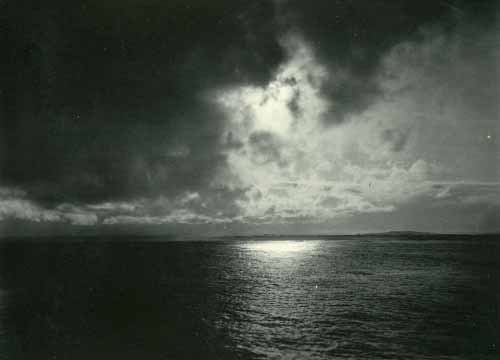
3.55pm From Air to Ether: X-Rays and the Late Victorian Imagination
Keith Williams (English)
This talk considers the impact of electromagnetics (in particular the discovery of X-rays) on the late Victorian 'scientific romance', focusing on transparent bodies in the work of H G Wells, C H Hinton and George Griffith.
Please note that this is a change to the original version of the programme published in the leaflet
4.10pm Glaciers and Climate Change
Ben Brock (Geography)
An illustration of what glaciers can tell us about past, present and future climate changes.
4.25pm Fighting the Invisible Enemies
Serena Albanese (Conservation Studio)
Pollutants are real enemies not only for our health but also for our cultural heritage. Conservators have the responsibility to defend the objects from destruction... but which weapons can they use against invisible menaces?
4.40pm The Evolution of the European Weather-protected City
Charles McKean (History)
This talk will focus on how the urban 'outdoor rooms' of European cities evolved to tame the weather to allow civic activities to take place within them.
4.55pm Conclusion
Cooper Gallery, Duncan of Jordanstone College, 5.30-6.00pm
5.30pm The Autonomy of the Object
Laura Simpson (Exhibitions Department)
An introduction to the current exhibition featuring the work of Tim Knowles, who will be showing drawings made by trees!
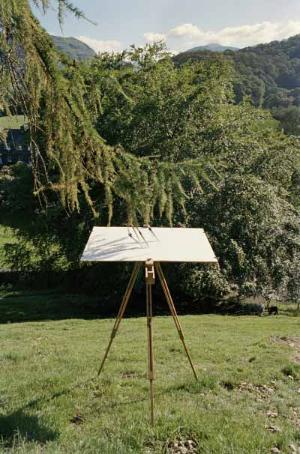
Tree drawing - Larch on Easel [4 pen] #1 by Tim Knowles, The How, Borrowdale, 2005 (courtesy of the artist; Rokeby Gallery, London)
Also on show:
Tower Foyer Gallery, Tower Building
2 November - 20 December, Mon-Fri 9.30am-8.30pm, Sat 9.30am-4.30pm
Watch the Skies
An exhibition from the University's archive and museum collections showing some of the ways that artists and photographers respond to the weather. Including paintings by Joan Eardley and John Constable and photographs by Michael Peto and Duncan Marquiss.
Admission Free - no need to book
Come to as much or as little as you like
For further information call 01382 384310
2006 Culture Day - Across the Spectrum
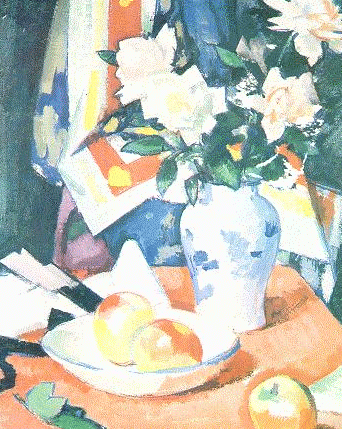
Roses and Still Life by S J Peploe, c.1925
A unique afternoon event featuring lectures, presentations, music, films and exhibitions on the theme of Colour.
Wednesday 22 November 2006
Programme
Baxter Conference Room, Tower Building 1.15-5.30pm
1.15pm Welcome
Caroline Brown (Secretary, Culture and Arts Forum)
1.25pm Spectrum or Spectre - the illusion of colour in the development of cinematography
Matthew Jarron (Museum Services)
Although we tend to think of colour being introduced to films in the 1930s, most silent films were coloured using an astonishing variety of different techniques. This presentation looks at the early development of colour, its aesthetic implications and how its (lack of) preservation has affected our understanding and appreciation of film history.
1.45pm The Sudden Failing of Language
Moira Payne (Fine Art)
A pleasure that eludes description, the overwhelming experience of bliss. Within colour lies an understanding of a verbal visual resonance that describes a spiritual space.
2.00pm Yellow and Blue don't make Green
Philippa Sterlini (Conservation Studio)
Pigments, dyes, media, discolouration, dirt, staining, acidity, UV and infra red light, L*A*B colour system, colour wheels and blue nitrile gloves - the colourful life of a conservator.
2.15pm The Experience of Colour
Roger Young (Philosophy)
Objectively, colour may be a property of radiation or reflectance of light. However, one could know all about colour in an objective sense, but, if one had been born blind, one would not know what colour experience is like. Just what is involved in the knowledge of what the experience of (e.g.) vermilion is like?
2.30pm Refreshments
3.00pm It May Be Blue, But It's No Movie: Derek Jarman's Blue
Brian Hoyle (English)
Derek Jarman's final film, Blue, a meditation on AIDS and the director's own mortality remains controversial less for its subject than its form. Presenting the viewer with an unchanging blue screen for 75 minutes, Blue has been dismissed as utter rubbish and championed as a masterpiece that challenged notions of cinematic representation.
3.15pm Seen Gardyne's Land lately?
Neil Grieve (Town and Regional Planning)
The bright colours of the Great Hall at Stirling Castle came as a surprise to many. This talk explores how colour is added to buildings, and will include a lively demonstration of how limewash is made.
3.30pm Scared of Colour? Vividness or dourness in the Scottish architectural psyche
Charles McKean (History)
People consider that Scotland is a dour country with brown grey buildings entirely suitable to a Calvinist ethic - typical retrospective post-Victorian nonsense. Scotland was as vulgarly vivid as any European country, as this talk will show!
3.45pm Why do trees look red? Remote sensing, colour and the natural environment
Mark Cutler (Geography)
A look at the way in which colour is used to map and monitor the natural environment from space.
4.00pm Refreshments
4.20pm Green Planet and Pink Flamingoes: why aren't plants black?
Neil Paterson (Botanic Gardens)
The physics of light and its interactions with pigments through evolutionary history explains the green colour of land plants and the colour changes of autumn leaves. Why land plants should be black but aren't and why flamingoes are pink are also explored.
4.35pm History in Colour
Caroline Brown (Archive Services)
Tracing the development of colour photography, illustrated by items from the University Archive collections.
4.50pm Colour in two and three dimensions: JD Fergusson's Painting and Sculpture
Jonathan Blackwood (Fine Art)
The Scottish artist John Duncan Fergusson is today remembered as the 'leader' of the Scottish Colourist painters. This short talk will discuss examples of both his painting and sculpture in terms of his use of colour, and the significance it had for him.
5.05pm The Colour of Music
The Airlie Music Recorder Ensemble
A live performance of colourful music including The Silver Swan and The East is Red.
The programme should finish around 5.30pm. At 6.00pm, the Exhibitions Department would like to invite you all to a drinks reception in the Cooper Gallery at Duncan of Jordanstone College of Art and Design, with a chance to see their new exhibition Platforma.
Admission to every part of the day is free - please come for as much or as little of the day as you like!
Across the Spectrum - the Exhibition!
To accompany the event, Archive, Records Management and Museum Services have staged an exhibition of colourful material from the University collections - from colourist paintings to brilliant butterflies and much more! The exhibition is on show in the Tower Foyer Gallery until Saturday 25 November.
Open Mon-Fri 9.30am-8.30pm Sat 9.30am-4.30pm
Admission Free
2005 Culture day - Time and Tide

A unique one-day event featuring lectures, presentations, performances, exhibitions and film screenings on the theme of water and the sea.
Wednesday 2 November 2005 12.30-5pm / 6.30-9pm
Programme
Baxter Conference Room, Tower Building 12.30-5pm
12.30pm Watery Graves
An Opening Address by Dr David Robb (English Department)
12.45pm "No other river in the world has got scenery more fine, Only I am told the beautiful Rhine..."
Prof Rob Duck (Geography Department)
From Perth to the North Sea, this talk examines some of the scenic features of the 'Silvery Tay' Estuary, the ways in which they were formed and also how its waters move, interact and transport sediment particles. McGonagall's words are not far from the truth, but his grammar could have been finer!
1.00pm Firthscape is Best! - Algae and Estuaries
Dr Neil Paterson (Botanic Garden)
Some have said that estuaries, with their contrasts of habitat and the daily drama of tides, are the best environments of all to live in. Life began in the sea but it is surely in estuaries where the colonisation of the dry land began. Today we'll look at some of the remarkable seaweeds of our estuary and how they adapt to the problems of living between land and sea.

1.15pm Fishermen and Sailormen - an Artist's View
Prof Will Maclean (Visual Research Centre)
Will Maclean is one of the best known contemporary artists in Scotland. Here he gives a slide presentation of artworks that relate to the fishing and merchant marine industries and traditions of Scotland.
1.30pm Painting the Seas
Dr Jonathan Blackwood (School of Fine Art)
Scottish Artists through the centuries have responded in a wide range of innovative ways to the sea, coastal communities and maritime life. This talk will look at some of their work in two and three dimensions, and will include the work of William McTaggart, William Lamb, Joan Eardley, John Bellany and Stanley Cursiter.
1.45pm Refreshments
2.10pm Wet Wet Wet - Water in Paper Conservation
Erica Kotze, Book and Paper Conservation Studio
According to a West African proverb, filthy water cannot be washed, but filthy paper can! From gentle humidification using water vapour to local washing with water and solvents to full immersion, aqueous treatments are a fundamental part of remedial paper conservation.

2.25pm Pirates of the Caribbean: Uncovering the Truth
Caroline Brown (Archive Services)
A chance to hear about the huge range of material in the University Archives that relate to the sea and water. The talk will describe how documentary sources, photographs and plans can be used to inform on subjects as diverse as pirates and power stations.
2.35pm The McClean Hydrometric Collection: Insights from the Watery Past
Dr Andrew Black (Geography Department)
Following on from Caroline Brown's talk, this looks in more detail at one of the fascinating collections in the University Archives. McClean privately pioneered the survey of water resources in Highland Scotland decades before the start of government-funded monitoring, and today his work helps put recent climatic changes into context.
2.45pm Discovering a Sea Captain's House
Neil Grieve (School of Town and Regional Planning)
This talk describes the work of the Tayside Building Preservation Trust to acquire and restore two buildings near the centre of Dundee, one of which turned out to be the home of a Sea Captain. It illustrates some of the complexities often faced by restorers in what the most people would view as a fairly straightforward and laudable objective.
3.00pm Noah's Flood
The Joot Theatre Company
A live performance of a fourteenth-century mystery pageant from the Chester cycle, featuring the cantankerous character of Mrs Noah (largely an English invention). Overall, this is a surprisingly comic (though still strictly orthodox) dramatization of the story of The Flood.
3.30pm Refreshments
3.45pm Science and Art from Dundee to the Ends of the Earth
Matthew Jarron (Museum Services)
A look at some of the fascinating links between the University and the early days of polar exploration.
4.00pm "Towards no Earthly Pole": Frankenstein's Voyage to the Arctic
Prof Peter Kitson (English Department)
Mary Shelley's famous novel presents an imaginary voyage of exploration to the Arctic Circle in search of a passage across the North Pole and in an attempt to discover the secrets of the magnetic poles. This talk explores the scientific background to such geographical and scientific exploration and the ideas that inspired Shelley to compose her Gothic fictions set at the extremes of human endeavour.
4.15pm Bridge over Troubled Waters
Prof Charles McKean (History Department)
Why build the longest railway bridge in the world into a cul-de-sac? This talk considers Dundee's motives behind promoting the Tay Bridge, its impact on the city, and why the ninth attempt fell into the river.
4.30pm Sea Songs and Water Music
The Airlie Music Recorder Ensemble
A live performance featuring excerpts from Handel's Water Music and traditional sea songs including Bobby Shaftoe, Blow the Wind Southerly and A Girl in Every Port
Room T9, Tower Building, 6.30-9pm
6.30pm Sea on Screen - The Navigator and Beyond
Introduced by Brian Hoyle (English Department) and Matthew Jarron (Museum Services)
We round off the day with a screening of Buster Keaton's classic nautical comedy The Navigator, along with an accompanying programme of shorts (including Len Lye's Rainbow Dance and Jean Renoir's Partie de Campagne) and extracts from rarely-seen films such as Down to the Sea in Ships and Man of Aran.
Admission to every part of the day is free - please come for as much or as little of the day as you like!
Exhibitions
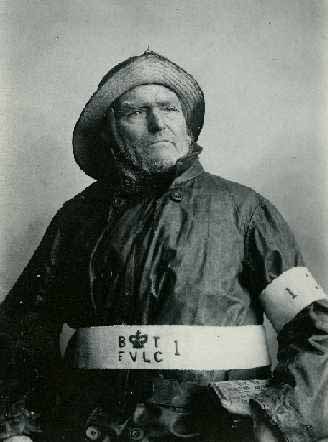
Foyer Gallery, Tower Building
Mon-Fri 09.30-20.30 Sat 09.30-16.30
Time and Tide
An exhibition of items from the University's archives which demonstrate Dundee and Scotland's close links with the sea and water.
Sea-Scapes
A Museum Services exhibition drawn from the University's fine art collections, showing some of the ways in which artists have been inspired by the sea.
Both exhibitions will be on show from now until 7 November.
Cooper Gallery, Crawford Building, DJCAD
Mon-Fri 09.30-17.00, Sat 10.30-16.30
Function Form Follows
Emmanuelle Laine - Mixko - Kate Owens and Tommy Grace
Bringing together five young designers and artists whose work playfully subverts the design mantra of 'form follows function'. Includes a working ornate fountain from pop bottles and their juice!
Exhibition runs 5 Nov - 3 Dec. Come to the preview on 4 Nov, 6-8pm to see the fountain in action!
